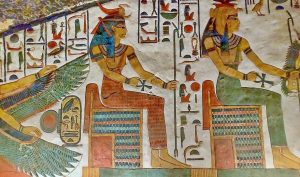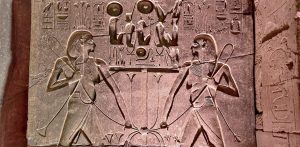The History of Ancient Egyptian Memphis City
The narrative of a city whose history is intertwined with that of ancient Egypt itself. Memphis, also known as Inebu-hedj, was the ancient capital of “Mhu” lower Egypt. Memphis, as Egypt’s first capital city, was far larger than one might expect; 11 huge temples with colossal sculptures of kings and gods, 5 large cemeteries and necropolises (including Giza’s renowned Pyramids and Saqqara), and a strong deity” Ptah” made the city’s influence reach the heavens. King Menes built the Egyptian city of Memphis in 2997 BCE. During the Old Kingdom, it was the capital of ancient Egypt (Kemet or Kumat), and it remained an important city throughout Egyptian history. It was a hive of activity due to its strategic location at the mouth of the Nile Delta. Peru-never, the ancient kingdom’s main port, had a dense population of workshops, factories, and warehouses that supplied food and commodities across the country. Memphis prospered as a regional center for business, trade, and religion throughout its golden era. Memphis was said to be protected by the deity Ptah, the patron of artisans. Hut-ka-Ptah (literally “Enclosure of the ka of Ptah”), the city’s main temple, was one of the city’s most significant buildings whose name in Greek is, Ao (Ai-gy-ptos), is thought to be the etymological root of the present English term Egypt. Its downfall is thought to have occurred as a result of the loss of its economic importance in earlier centuries, after the growth of coastal Alexandria. Its religious significance dwindled after the old religion was abandoned during the Edict of Thessalonica (380 AD), which established Nicene Christianity as the Roman empire’s only religion. The remains of the ancient capital provide scattered traces of the city’s past today. They have been protected as a World Heritage Site since 1979, together with the Giza pyramid complex, As an open-air museum, the site is open to the public.
Memphis City Location
The city is 25 kilometers south of Cairo, on the west bank of the Nile, near the start of the Nile delta. During Egypt’s Middle Kingdom (2055–1640 BCE), it was known as Ankh-Tawy, which meant “Life of the Two Lands,” since it was strategically located between upper and lower Egypt, giving it total control. During the New Kingdom of Egypt, it was called “Men-Nefer,” which meant “enduring and beautiful,” and was subsequently Memfi in the Coptic era, and Memphis in Greek. During the Old Kingdom, the city was the capital of Egypt for eight dynasties in a row, and during the 6th dynasty, trade became the focal point of the city’s religious scene, which included the creator deity Ptah, his wife Sekhmet, and their son Nefertem. An Alabaster Sphinx guards Ptah’s temple, which serves as a symbol of the city’s strength and dignity. Many monuments from over 5000 years ago may be seen on the site, including the enormous Rameses II statue. After the emergence of Thebes, the city’s authority began to wane under the New Kingdom, and Alexandria became the new capital throughout the Greco-Roman period. Finally, the city became a relic of the past, a resting place for strewn stone and fading splendor.
If you’re already in Egypt, we recommend that you include Memphis in your Egypt day excursions. If you are traveling to Egypt from outside of Egypt and wish to learn more about ancient Egypt’s amazing civilization, check out our Egypt private tour packages and Nile river cruises and book your preferred adventure.






